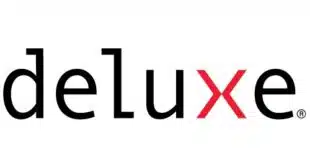Global e-commerce sales totaled more than $5.1 billion during the four- day holiday shopping period from Black Friday through Cyber Monday, up 76% from the same period in 2019, says e-commerce platform provider Shopify Inc. Online sales for the period, which traditionally kicks off the holiday-shopping season, surpassed 2019 volume on Saturday, November 28 at 5 p.m. Eastern Time, less than midway through the four-day stretch.
A narrower look at the data shows that Black Friday sales alone increased 75% from 2019 to a record $2.4 billion globally. Shopify, which tracks Black Friday sales from the start of Black Friday in New Zealand through the end of Black Friday in California, says sales topped $1 billion by 8:00 am Eastern Time on Friday. Shopify bases its data on sales by the more than 1 million businesses in 175 countries using its platform.
In addition, the number of consumers shopping online during the four-day period rocketed to more than 44 million, a 50% increase from 2019.

Helping drive the surge in sales this year is consumers’ preference to shop online during the Covid-19 pandemic. “This has been a transformative year for commerce globally,” Shopify president Harley Finkelstein says in a prepared statement. “With the center of gravity in commerce shifting from in-store to online, the pandemic has accelerated a change we have long anticipated. This multichannel shopping phenomenon is the blueprint for the future of retail—and we couldn’t be more excited by it.”
Average consumer spending per order totaled $89.20 throughout the Black Friday/Cyber Monday period. Consumers in the United States spent $92.80 on average, the fourth highest average spend per order behind shoppers in Japan ($106.40), Australia ($105.50), and Canada ($103.00).
While consumers are spending more online, Shopify notes they started their holiday shopping earlier than normal, with daily total sales increasing 19 days before Cyber Monday, nearly two weeks earlier than previous years. In the week leading up to Cyber Monday, from Nov. 23 through Nov. 30, sales increased 84% compared to the same period in 2019.
Sales made through mobile devices. though strong, were essentially flat as a percentage of total volume during the Black Friday/Cyber Monday period, accounting for 67% of sales compared to 68% in 2019. Likewise for sales through desktop computers, with 33% of sales made on desktop systems, compared to 32% in 2019.
The top-selling U.S. cities during the four-day period were New York and Los Angeles. The U.S., United Kingdom, and Canada were among the top-selling countries.
Apparel and accessories were the top performing categories followed by health and beauty and home and garden.





